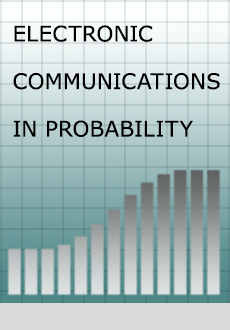Abstract
Consider two urns, $A$ and $B$, where initially $A$ contains a large number $n$ of balls and $B$ is empty. At each step, with equal probability, either we pick a ball at random in $A$ and place it in $B$, or vice-versa (provided of course that $A$, or $B$, is not empty). The number of balls in $B$ after $n$ steps is of order $\sqrt n$, and this number remains essentially the same after $\sqrt n$ further steps. Observe that each ball in the urn $B$ after $n$ steps has a probability bounded away from $0$ and $1$ to be placed back in the urn $A$ after $\sqrt n$ additional steps. So, even though the number of balls in $B$ does not evolve significantly between $n$ and $n+\sqrt n$, the precise contain of urn $B$ does.
This elementary observation is the source of an interesting two-time-scale phenomenon which we illustrate using a simple model of fragmentation-coagulation. Inspired by Pitman's construction of coalescing random forests, we consider for every $n\in \mathbb{N}$ a uniform random tree with $n$ vertices, and at each step, depending on the outcome of an independent fair coin tossing, either we remove one edge chosen uniformly at random amongst the remaining edges, or we replace one edge chosen uniformly at random amongst the edges which have been removed previously. The process that records the sizes of the tree-components evolves by fragmentation and coagulation. It exhibits subaging in the sense that when it is observed after $k$ steps in the regime $k\sim tn+s\sqrt n$ with $t>0$ fixed, it seems to reach a statistical equilibrium as $n\to\infty$; but different values of $t$ yield distinct pseudo-stationary distributions.
Citation
Jean Bertoin. "A two-time-scale phenomenon in a fragmentation-coagulation process." Electron. Commun. Probab. 15 253 - 262, 2010. https://doi.org/10.1214/ECP.v15-1552
Information





